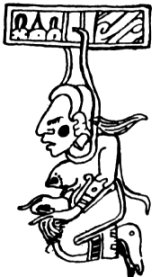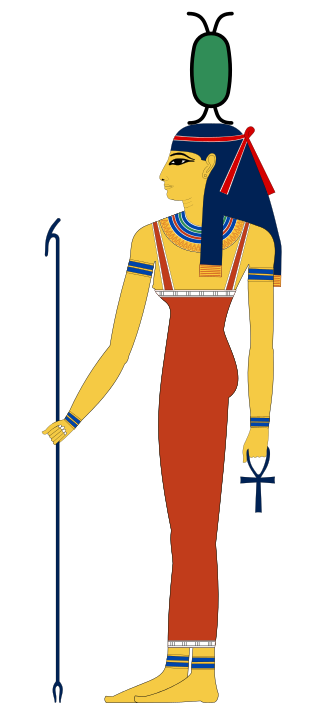This article relies largely or entirely on a single source .(February 2024) |
In Inuit mythology, Nujalik is the goddess of hunting on land. [1]
For reference, Sedna is the goddess of sea hunting (whaling, fishing, etc.).
This article relies largely or entirely on a single source .(February 2024) |
In Inuit mythology, Nujalik is the goddess of hunting on land. [1]
For reference, Sedna is the goddess of sea hunting (whaling, fishing, etc.).

In ancient Greek religion and mythology, Artemis is the goddess of the hunt, the wilderness, wild animals, nature, vegetation, childbirth, care of children, and chastity. In later times, she was identified with Selene, the personification of the Moon. She was often said to roam the forests and mountains, attended by her entourage of nymphs. The goddess Diana is her Roman equivalent.

Diana is a goddess in Roman and Hellenistic religion, primarily considered a patroness of the countryside and nature, hunters, wildlife, childbirth, crossroads, the night, and the Moon. She is equated with the Greek goddess Artemis, and absorbed much of Artemis' mythology early in Roman history, including a birth on the island of Delos to parents Jupiter and Latona, and a twin brother, Apollo, though she had an independent origin in Italy.

At the time of the Spanish conquest of Yucatán (1527–1546), Ix Tab or Ixtab was the indigenous Maya goddess of suicide by hanging. Playing the role of a psychopomp, she would accompany such suicides to heaven.

Britomartis was a Greek goddess of mountains and hunting, who was primarily worshipped on the island of Crete. She was sometimes believed to be an oread, or a mountain nymph, but she was often conflated or syncretized with Artemis and Aphaea, the "invisible" patroness of Aegina. She is also known as Dictynna or as a daughter of Dictynna.

Neith was an early ancient Egyptian deity. She was said to be the first and the prime creator, who created the universe and all it contains, and that she governs how it functions. She was the goddess of the cosmos, fate, wisdom, water, rivers, mothers, childbirth, hunting, weaving, and war.

Bendis was a Thracian goddess associated with hunting and the moon. Worship of the goddess seems to have been introduced into Attica around 430 BC. Some writers identified Bendis in Attica with the goddess Artemis, but the temple of Bendis at Piraeus which was near the temple of Artemis, clearly display that the two goddesses were distinct. She was a huntress, like Artemis, but was often accompanied by dancing satyrs and maenads, as represented on a fifth-century red-figure stemless cup at Verona.

Venus and Adonis is a narrative poem by William Shakespeare published in 1593. It is probably Shakespeare's first publication.

Astarte is the Hellenized form of the Ancient Near Eastern goddess ʿAṯtart. ʿAṯtart was the Northwest Semitic equivalent of the East Semitic goddess Ishtar.

The Nemoralia is a three-day festival originally celebrated by the ancient Romans on the Ides of August in honor of the goddess Diana. Although the Nemoralia was originally celebrated at the Sanctuary of Diana at Lake Nemi, it soon became more widely celebrated. The Catholic Church may have adapted the Nemoralia as the Feast of the Assumption.
According to classical sources, the ancient Celts were animists. They honoured the forces of nature, saw the world as inhabited by many spirits, and saw the Divine manifesting in aspects of the natural world.

Dali is a goddess from the mythology of the Georgian people of the Caucasus region. She is a hunting goddess who serves as the patron of hoofed wild mountain animals such as ibexes and deer. Hunters who obeyed her numerous taboos would be assured of success in the hunt; conversely, she would harshly punish any who violated them. She is most prominently attested in the stories of the Svan ethnic subgroup in northwestern Georgia. Other groups in western Georgia had similar figures considered equivalent to Dali, such as the Mingrelian goddess Tkashi-Mapa.
In Greek mythology, Siproites or Siproetes is the name of a Cretan hero, who saw the goddess Artemis naked while she was bathing and was then transformed into a woman, paralleling the story of the hunter Actaeon.

Diana Bathing or Diana Getting out of her Bath is an oil-on-canvas painting by French artist François Boucher, created in 1742. It depicts the Roman goddess Diana, with a nymph as her companion. The painting was acquired in 1852 by the Louvre, in Paris.